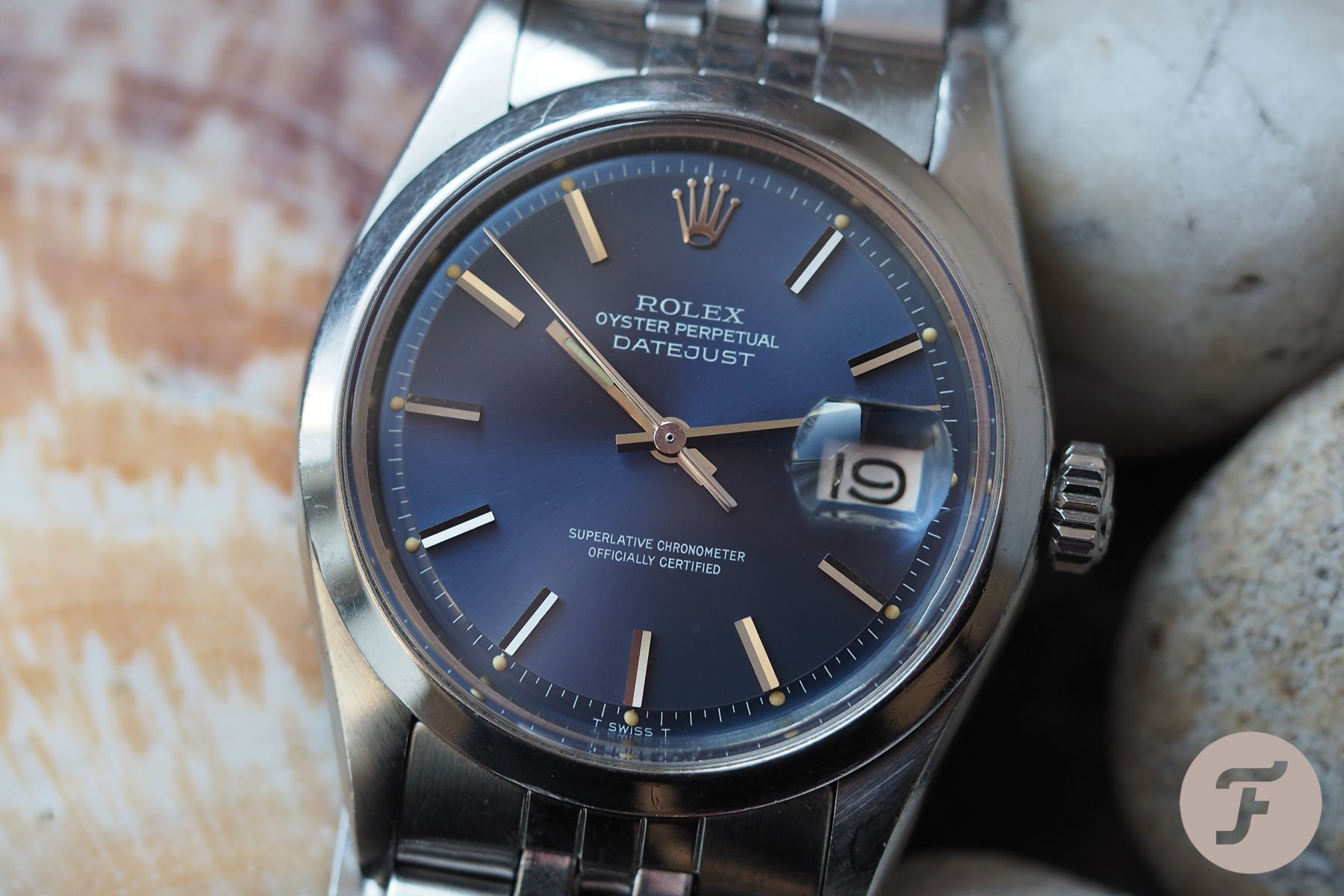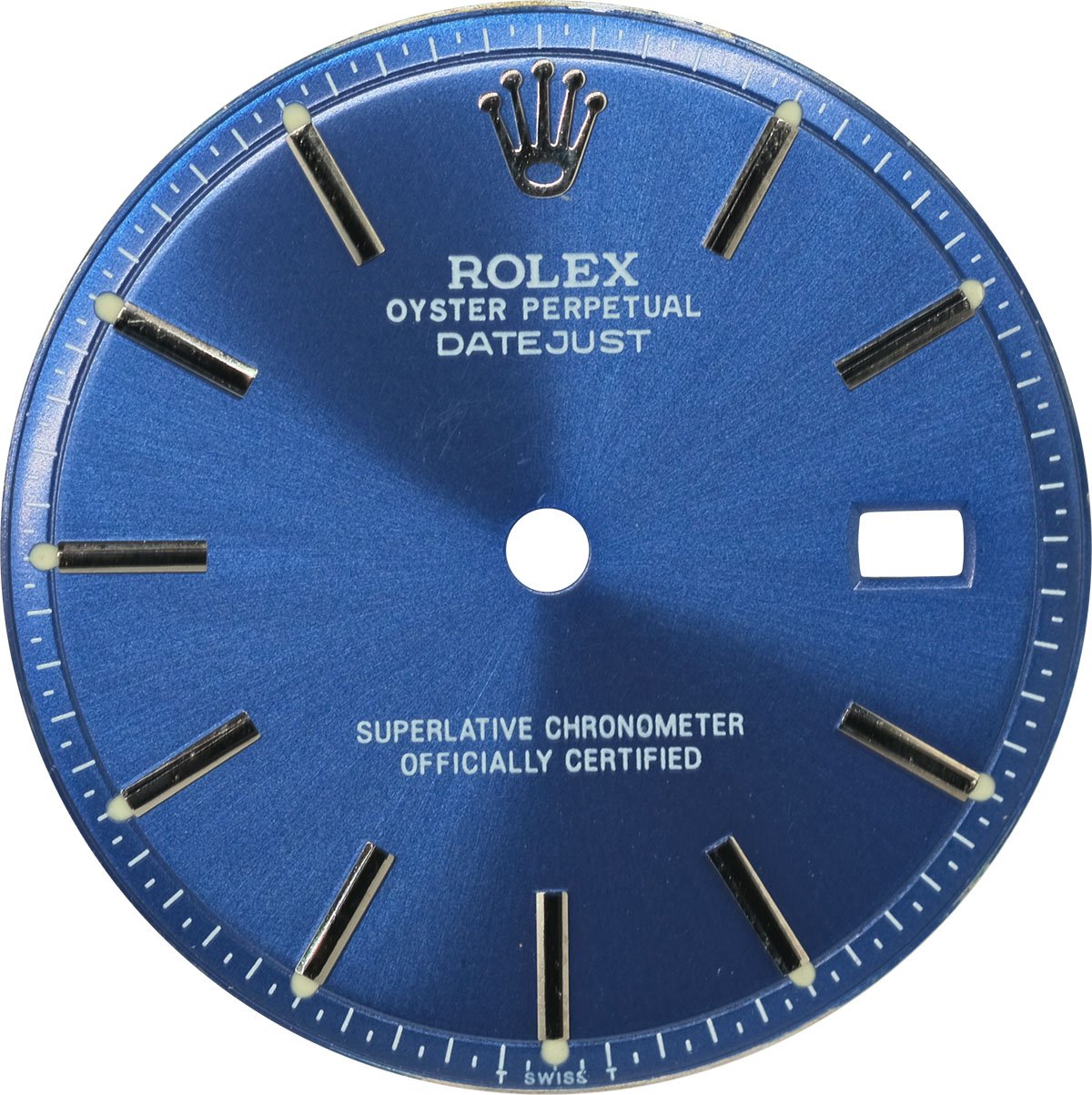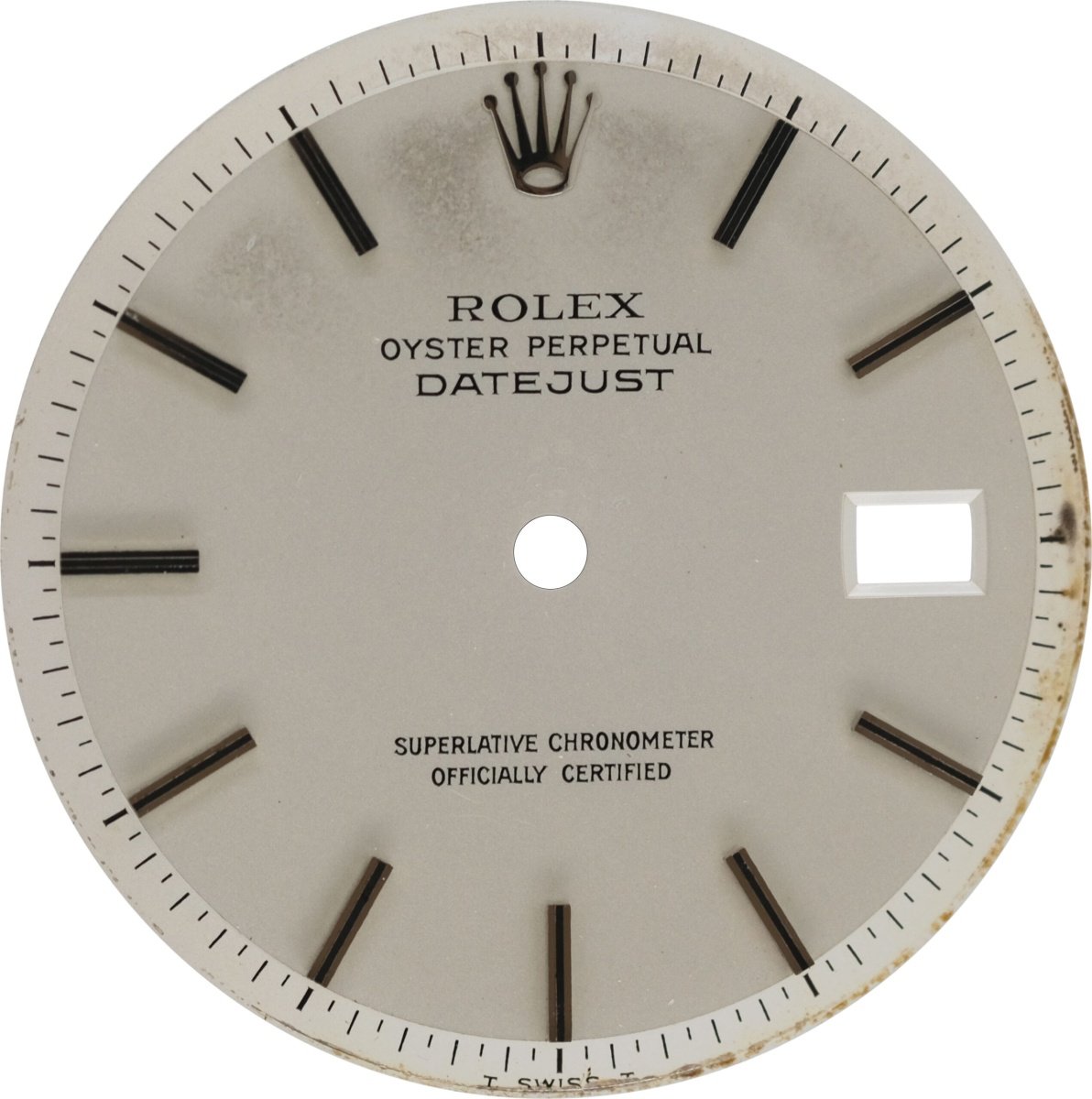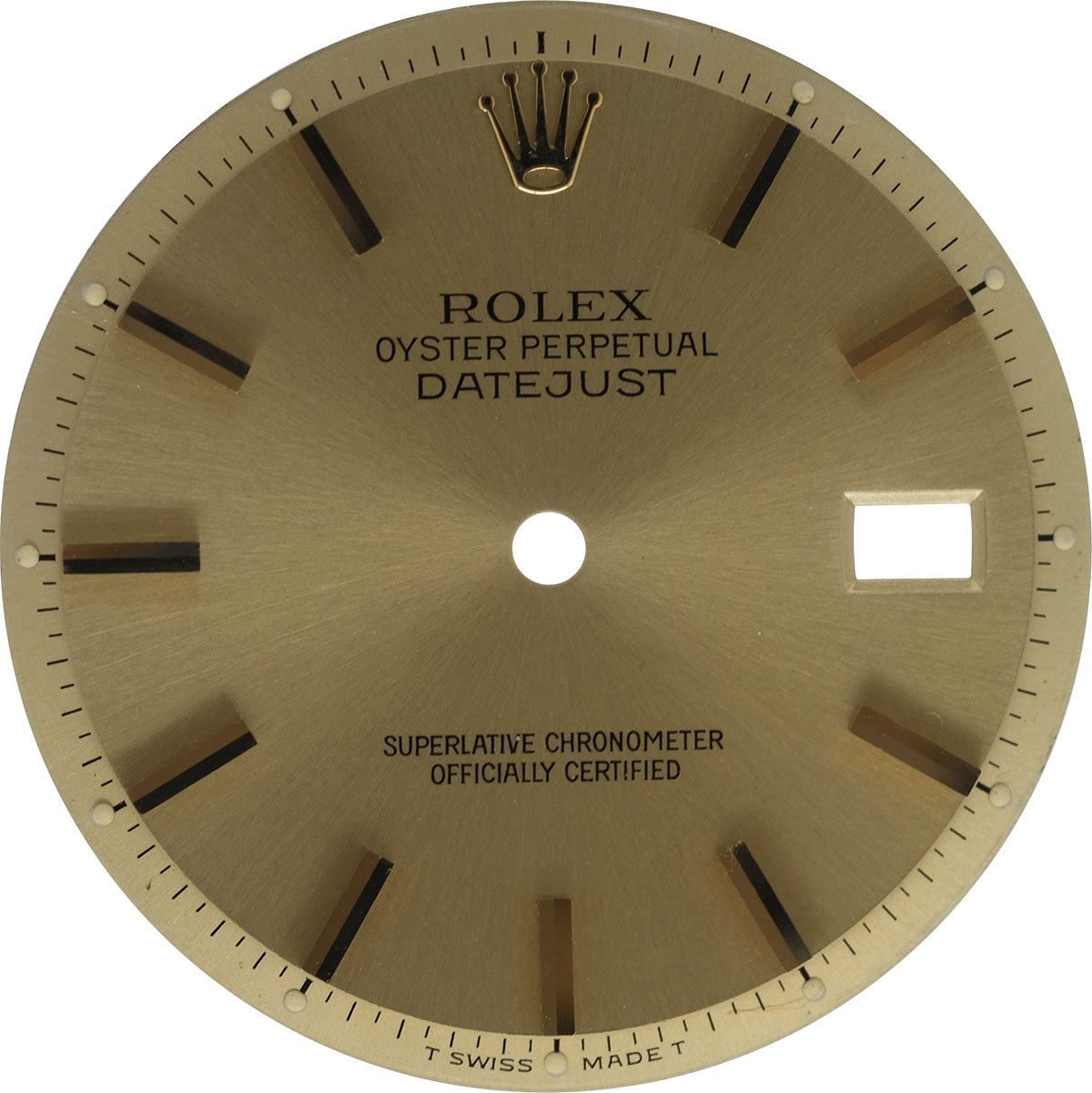In-Depth: How To Spot A Fake Dial In A Vintage Rolex Datejust
When Nacho asked me to write an article on how to spot a fake vintage Datejust dial, I knew I would have to give away a bit of a teaser from my book. The example used in this article comes from The Vintage Rolex Datejust Buyer’s & Collector’s Guide. If you have the book, you will surely recognize this blue atrocity. Buying a vintage Rolex Datejust can be daunting for the uninitiated. Here are a few things to look out for if you are new to the game, some tell-tale signs that you may be dealing with a fake dial. Of course, fake dials are only one of many potential issues, but you have to start somewhere, right?
Below, you will find a replica dial for a 16xx reference Rolex Datejust. That should put it in the era from 1959 to roughly 1977, but this fake is much younger. The majority of the issues described here apply to other generations as well, though, so if you are chasing an older or younger Datejust, you may still find these tips useful. Without further ado, let’s release our inner Sherlock and investigate.
Note: the vintage Datejust is my personal field of interest, but the principles discussed are directly or indirectly applicable to many other models and even brands.
First impressions count
This is not very helpful if you intend to just go to one shop and purchase a vintage Datejust. But if you spend a lot of time researching and trying on several examples, it can be very valuable. As you see and handle more and more watches, your eye develops. You get an instinctive feeling about what is right and what is not.
Working as a vintage dealer, I was handed my fair share of fake or partly fake watches by aspiring sellers. In the vast majority of cases, I would get a vague sense that something was wrong long before I actually spotted the specific issue. The first impression would just be off. I am sure the experienced collectors among you have that sense when you glance at the dial above. If you’re at a loss, don’t worry. A little effort goes a long way to uncover problems.

A Datejust ref. 1600 with an authentic blue dial. Before we go into details, note the overall refinement that is clearly lacking in the fake dial
The fake vintage Datejust dial blank
The “blank” is the bare stamped-out metal plate that serves as the base for the dial. In our example here, it is a dead giveaway that this is a completely fake vintage Datejust dial. On a 16xx generation Datejust, the outer edge of the dial should be stepped and sloped down. This is the so-called “pie-pan” or “stepped” dial. It is one of the attractive features of this generation.
If you look at a real dial like the one above, you will see a sharp edge stepping down. However, our fake vintage Datejust dial looks rather poorly stamped out. The edge of the raised center is blunt, and you do not get a sense of any sort of slope. It looks a bit like a top hat. It is also painted poorly. Have a look at the edge of the dial between eleven and twelve. You can see through the paint.
Another giveaway is the date aperture. Its rough shape is correct, but the edges are way too wobbly. In fact, the date aperture is too small and the center hole is too large. Faults in the blank like these are tells of a fully fake vintage Datejust dial. If the basic shape of a suspect dial is good, it might just be refinished rather than fake.
Printing on a fake vintage Datejust dial
It is important to know that dial printing on vintage watches was not as regular as it is today. As you will see from the two real dials in this article, they are imperfect too. Still, there are some things to look out for when judging the printing.
First of all, the fonts are off on our fake vintage Datejust dial. Look how “Rolex” is a bit too tall and narrow. The ratio between “Rolex” and “Datejust” is off as well. In fact, all the fonts on this fake dial are very different from the real example. There is just no refinement like you find on the real deal. The printing is also rather sloppy in its application. Have a look at “Chronometer” and “Certified”. Both words seem thicker and smeared out compared to “Superlative” and “Officially”.
Appliques on a fake vintage Datejust dial
Next, we should have a look at the appliques on our fake dial. The coronet at 12 o’clock does not have the right shape in comparison to an actual Rolex coronet. Again, there is a lot of variation in real coronets as well, but this is certainly too sloppy. Look how much neater and smoother these look on the real dials. The prongs confidently radiate from the base of the crown on the real examples. On the fake, they look like fat fingers.
The hour indices are also off. Having spent 14 months intensively researching vintage Datejusts for the book, I have been unable to determine just how many variations of indices were made. Let it suffice to say that there are a lot. All of them, however, are sharply finished. The ones on this fake vintage Datejust dial are certainly not. You can hardly make out whether the longitudinal edges are faceted or rounded. On a real dial, that would be very clear and sharply executed.
Shining a light on the lume
At the bottom of the fake dial, we find “T Swiss T”. This can be correct for the 16xx generation. It means we would expect to see tritium around the hour markers. Fun fact: no-lume versions exist, but they still feature the “T” signatures. Rolex did not print specific dials for markets with import bans on radioactive tritium. As such, you might expect either tritium or no lume on a “T”-signed dial.
It is hard to tell from the photo, but our fake dial is fitted with the much-later LumiNova. It lights up like a Christmas tree. Tritium should have lost the vast majority of its luminescence by now. The LumiNova is also applied rather shoddily. Rolex lume plots tend to be almost perfect half spheres. These are uneven in size and shape.
The presence of LumiNova can mean two things: either the dial is not original, or it was relumed. Relumed dials are much more common than fake vintage Datejust dials. This means you should be careful jumping to conclusions from spotting LumiNova on a vintage Datejust.
Judging a fake vintage Datejust dial
If you look at the blue dial and the information above, it seems very easy to spot a fake dial. The thing is, most of these issues can occur on real dials as well. Look at the printing on the silver dial, for instance. It is quite messy. Still, this dial is original and has not been refinished. This is just the quality variance that was acceptable at the time. Unless there is a single issue that is very obviously problematic, you are, therefore, looking for combinations of issues. In our blue example, pretty much everything is wrong, making our job easy. But on a better fake vintage Datejust dial, you may not come out so sure. You may be dealing with a QC issue. You may also be dealing with a refinished dial.
On a better fake vintage Datejust dial, you may not come out so sure.
Rest assured, the most experienced connoisseurs will end up in disagreement on some suspect dials. Sometimes it is just impossible to tell with 100% certainty. It is important to realize that the field is developing as well. Things that might be considered incorrect today might be shown to be factory-original after all tomorrow. And the other way round.
Still, I hope to have equipped you with some insights on how to spot common dial issues on a vintage Datejust. I can only encourage you to go out and get hands-on with as many watches as you can. Before you know it, you will have developed an eye for the good, the bad, and the ugly! Happy hunting!












